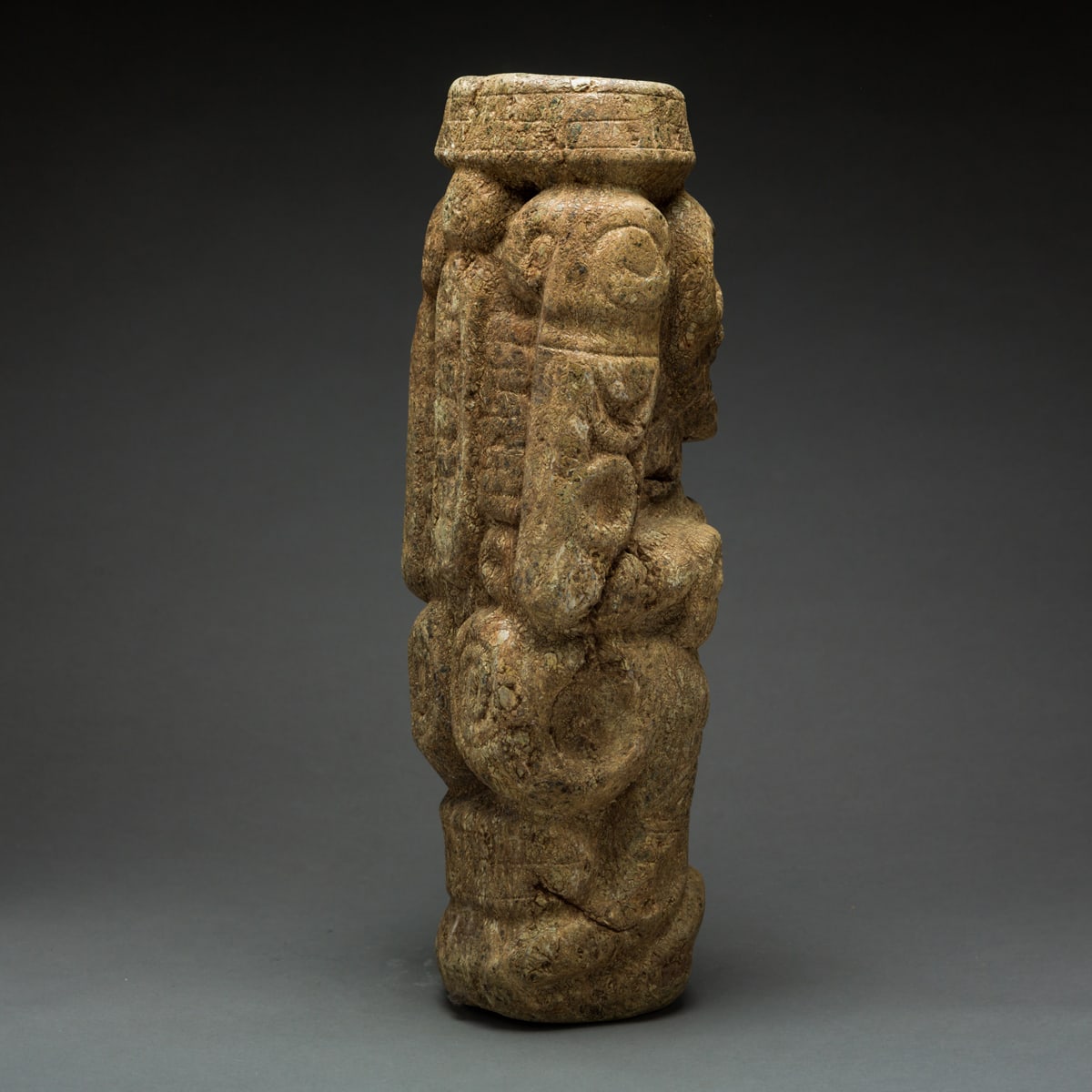Taino Stone Zemi Sculpture, 1100 CE - 1500 CE
Stone
52.1 x 16.5 cm
20 1/2 x 6 1/2 in
20 1/2 x 6 1/2 in
FF.043
Further images
Carved from a dense sand-coloured stone, this sculpture depicts a zemi figure- the physical manifestation of a Taino god, spirit or ancestor. The Taino believed in a pantheon of deities...
Carved from a dense sand-coloured stone, this sculpture depicts a zemi figure- the physical manifestation of a Taino god, spirit or ancestor. The Taino believed in a pantheon of deities that controlled the natural elements, as well as engaging in ancestor worship. The facial features are skull-like, especially the large circular eye-sockets. The shoulders are hunched up, and begin at the level of the forehead. The figure is completely naked except for jewelry worn around the legs and a large band around the protruding stomach, both incised with elaborate geometric motifs. The status of the figure is implied by the stool on which he is seated; this type of seating was reserved for the most illustrious members of Taino society. The feet are visible on the small circular pedestal, pointing inwards at an unnatural angle. This manipulation of the limbs is a recurring feature of Taino art. The reverse is flat and much more stylized, with the spine and rib-cage clearly indicated,
Perhaps the most intriguing element from a functional point of view is the small platform above the head. Many Taino stone sculptures had some association with the use of cohoba. This was a hallucinogenic powder ground from trees native to the region. It was used by shamans (religious leaders) to induce a trance-like state of mind in which they would be able to communicate with the souls of the dead. The small circular platform on this piece may have been used as a grinding surface or to support other implements associated with this ritual. A sculpture of this size and complexity would undoubtedly have been the preserve of the chieftain (cacique) or his closest retinue and offers us a rare glimpse into the spiritual world of the Taino. (AM)
Perhaps the most intriguing element from a functional point of view is the small platform above the head. Many Taino stone sculptures had some association with the use of cohoba. This was a hallucinogenic powder ground from trees native to the region. It was used by shamans (religious leaders) to induce a trance-like state of mind in which they would be able to communicate with the souls of the dead. The small circular platform on this piece may have been used as a grinding surface or to support other implements associated with this ritual. A sculpture of this size and complexity would undoubtedly have been the preserve of the chieftain (cacique) or his closest retinue and offers us a rare glimpse into the spiritual world of the Taino. (AM)













